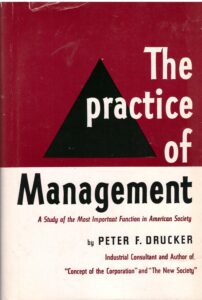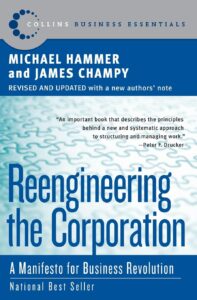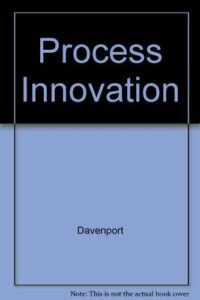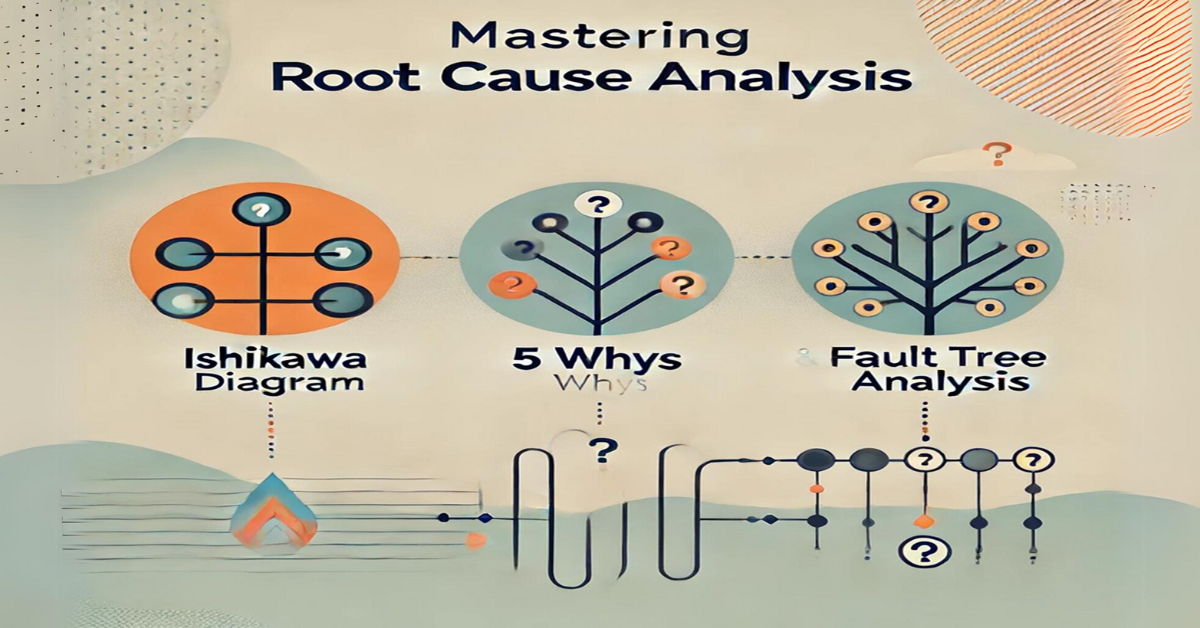
Navigating the Maze of Business Rule Analysis
Welcome to the intricate world of Business Rule Analysis (BRA), a crucial component of Business Process Management (BPM). BRA is a crucial tool for guiding an organization’s internal processes and decision-making in order to reach its goals. This text delves into the essence of BRA, where we’ll discuss the dependencies and impacts on BPM.
Understanding Business Rules
Business rules are like the DNA of an organization, they define how it functions and reacts. Here’s a closer look at the different types of business rules that shape a company’s operations:
Validation Rules
These are the gatekeepers ensuring that data entering a process is accurate and appropriate. They are the critical checkers confirming everything from whether a form is filled out correctly to whether the values fall within permitted ranges.
Derivation Rules
Think of these as the organization’s calculators. They use available data to work out essential figures, like how much a product should sell for, balancing costs and desired profit margins.
Restriction Rules
These are the limits within which the company operates. They’re the barriers that designate who can do what within a business process, often outlining user permissions and data accessibility.
Flow Rules
The navigators of process sequencing, flow rules guide what happens next, ensuring a smooth transition from one step to the next in the business process.
The Backbone of Business Rules: Legal Origin
Beyond internal governance, businesses are also bound by a framework of legal rules:
Tax and Fiscal Rules
These are the monetary directives that determine the fiscal obligations of a business, aligning everything from taxes to contributions.
Labor Rules
The base of the employer-employee relationship, labor rules outline the rights, duties, and workplace standards for both parties.
Consumer Protection Rules
The respect for consumers, these rules set the standard for product quality and marketing honesty.
Environmental Protection Rules
These are the commitments for environmental outsourcing, directing companies on issues of sustainability and ecological responsibility.
Intellectual Property Rules
The guardians of creativity, these rules protect the unique intellectual assets of a company, from inventions to brand identities.
The Evolution of Business Rule Analysis in Management
Historical Evolution and Origin
The term ‘business rule analysis’ has its roots in the wider discipline of business administration and management. Its origin can be traced back to the early days of commercial enterprises, where the need to standardize operations and decision-making processes became apparent.
The formalization of business rules as a concept, however, gained prominence with the advent of information technology systems in the late 20th century. As businesses grew in complexity, so too did the necessity for clear, concise, and actionable rules to guide operations and strategic planning.
Proliferation Across Managing Domains
This analysis has since permeated various domains within management, including:
Operational Management: Ensuring that day-to-day operations are conducted in a consistent and efficient manner.
Strategic Management: Guiding long-term decision-making and direction-setting for the organization.
Compliance and Risk Management: Navigating the complex landscape of legal and regulatory requirements.
Quality Management: Maintaining standards in processes and outputs to meet customer and regulatory standards.
Information Technology Management: Defining how technology is used to support business processes and decision-making.
Influential Thought Leaders and Works
Several key authors have profoundly influenced the field of business rule analysis through their scholarly work:
Peter F. Drucker: Often referred to as the ‘father of modern management,’ Drucker’s insights into the structure and organization of corporations have been foundational. His book ‘The Practice of Management’ is a primordial work that explores the principles of modern business management.

W. Edwards Deming: Known for his work in quality management and continuous improvement, Deming’s philosophy is captured in his book ‘Out of the Crisis,’ which has influenced business administration’s approach to quality and process control.

Michael Hammer and James Champy: They are known for their work on business process reengineering, a management approach that examines and redesigns business processes. Their book ‘Reengineering the Corporation’ was a bestseller and remains influential in the realm of process improvement.

Thomas H. Davenport: His book ‘Process Innovation: Reengineering Work through Information Technology’ explores the interplay between information technology and business processes, underscoring the importance of aligning IT with business strategy.

Enduring Influence
These authors, among others, have formulated ideas for business rule analysis as a discipline, providing a framework for understanding the mechanistic aspects of corporate function and the organic nature of strategic decision-making. Their work highlights the importance of clear rule definition and analysis in achieving business administration goals and remarks the critical role that well-articulated business rules play in the successful management of any organization.
The BPM Analyst: A Critical Role
A BPM analyst operates like a detective and architect combined, deciphering and structuring business rules to streamline and strengthen processes. It’s not always straightforward; some rules are unwritten, inferred from practice and culture. But identifying, understanding, and documenting these rules is crucial to process enhancement and efficiency.
Implementing Business Rules in BPM Systems and Process Automation
Learning how to incorporate business rules into a Business Process Management System (BPMS) is similar to mastering a complicated puzzle. When the business rules are organized and combined correctly, they can create a strong and efficient business process. Here’s how it happens:
Integration and Execution of Business Rules
BPMS is designed to be the platform through which business rules are not just stored but also executed. By embedding validation, derivation, restriction, and flow rules into the system, the BPMS enforces these guidelines in real-time, guiding process execution and ensuring compliance and efficiency.
Process Automation: Turning Rules into Actions
The automation feature of BPMS takes these business rules and translates them into actionable workflows. Validation rules become automated checks within a process, derivation rules calculate and process data on the fly, restriction rules manage access control automatically, and flow rules seamlessly direct the process flow from one step to the next.
Dynamic Adaptation
Business rules in a BPMS are dynamic; they can be adjusted as regulations change or the business evolves. This flexibility means that an organization can remain agile, adapting its processes quickly to new circumstances without extensive manual and human work.
Real-Time Decision Making
BPMS with integrated business rules provides the foundation for real-time decision-making. It can trigger instant responses to specific conditions, such as escalating an issue if certain criteria are met or rerouting a task based on computational capacities.
Monitoring and Improvement
Through dashboards and reporting tools, BPMS allows businesses to monitor the effectiveness of their rules and processes. By analyzing performance data, companies can identify bottlenecks or inefficiencies, then tweak their rules and processes for continual improvement.
The Value of Business Rules in Process Improvement
The true value of implementing business rules in a BPMS comes from the transformation it can bring about in an organization:
Enhanced Efficiency: Automating business rules reduces the need for manual intervention, speeding up processes and reducing the potential for human error.
Consistency and Compliance: A BPMS ensures that every action taken is in line with company policies and regulations, providing consistency across the organization and helping to maintain compliance with external regulations.
Scalability: As a business grows, its processes can scale accordingly without the need to fundamentally change the underlying structure. Business rules within a BPMS can be updated or extended to constant growth.
Informed Decision-Making: With clear rules and real-time data, decision-makers can trust the system to provide the information they need, when they need it, fostering more informed and strategic decisions.
Human Tasks Suitable for Automation by BPMS Tools
In the landscape of Business Process Management, certain human tasks stand out as prime candidates for transformation into automated business rules. Here’s a closer look at such tasks:
Data Entry and Validation
Routine data entry is a staple of business operations. By incorporating validation rules into BPMS, these tasks can be automated, ensuring that the data entered meets predefined criteria, thus minimizing errors and saving significant time.
Approvals and Escalations
Approval processes often involve several hierarchical steps, which can be automated through BPMS. By setting up flow rules, the system can automatically forward applications to the relevant parties and escalate matters if they aren’t addressed within a set timeframe.
Notifications and Communications
The task of notifying team members about updates or changes is both critical and time-sensitive. Automating these communications through BPMS ensures that the right people are informed at the right time, reducing the lag that can occur with manual methods.
Task Assignments and Scheduling
Automating task assignments based on availability, expertise, or workload helps optimize resource allocation. BPMS can balance workloads and schedule tasks, ensuring efficient operation without the need for manual intervention.
Compliance Checks
Ensuring that operations adhere to internal and external regulations is a complex task. BPMS can be programmed with compliance rules to automatically verify that each process meets all necessary standards and legal requirements.
Reporting and Analysis
Gathering data for reports is a repetitive task that lends itself well to automation. A BPMS can be set up to generate and distribute regular reports, giving stakeholders timely insights into performance metrics.
Inventory Management
Inventory tasks, such as reordering stock when levels fall below a certain point, can be automated with BPMS. By defining specific rules, the system can initiate purchase orders and track inventory levels without human input.
Customer Relationship Management
Automated rules can handle aspects of customer service, such as sending out satisfaction surveys after service completion or reminders for contract renewals, thereby enhancing the customer experience and freeing up human resources for more complex inquiries.
Incident Management
In case of an incident or a deviation from the norm, a BPMS can automatically initiate a response, whether it’s alerting the relevant personnel or starting a corrective process, thereby reducing the time to action.
Benefits of Automation through BPMS
Automating these tasks within a BPMS brings several benefits:
Increased Productivity: Automation reduces the time spent on repetitive tasks, allowing human resources to focus on more strategic initiatives.
Greater Accuracy: Automated rules decrease the likelihood of human error, leading to higher quality outcomes.
Consistent Execution: Automation ensures that tasks are performed consistently, providing uniformity across the organization.
Adaptability: Automated processes can be quickly adapted to changing business needs or regulatory environments, making the organization more agile.
Understanding which tasks to automate and how to effectively implement them in a BPMS is a skill that can substantially elevate a business’s capability to operate efficiently and responsively. Training in BPMS tools and process automation can equip professionals with the knowledge to harness this power, creating a significant competitive advantage.
Business Rules Engines (BRE) in Business Process Management
A Business Rules Engine (BRE) is a powerful software component that executes business rules described in a business-friendly language. It’s a cornerstone in the world of BPM for managing complex decision-making processes. Here’s how these engines elevate the management of business rules:
Core Characteristics of BREs
Decision Automation
BREs specialize in the automation of decision logic, which can include calculations, reasoning, and the processing of complex rules that are difficult to code directly into BPMS workflows.
Centralization of Rules
Instead of scattering business rules across various applications, a BRE centralizes them, making it easier to manage, maintain, and update them without altering the core application code.
Agility and Flexibility
Changes in business logic don’t require a Enterprise Resource Planning (ERP) system reconfiguration where updates can be made directly in the BRE without the need for extensive IT involvement, thus promoting business agility.
Consistency
A BRE ensures that business rules are applied consistently across all processes and systems, eliminating discrepancies and reducing the risk of non-compliance.
Scalability
As business grows and rules become more complex, the BRE can handle an increasing number of rules without a drop in performance.
How BREs Work with BPMN and BPMS
Integration with BPMN Models
Business Process Model and Notation (BPMN) is a standard for representing business processes in a diagrammatic form. BREs can take the decision points within a BPMN model and execute the associated business rules as defined by the model’s pathways.
Execution Within BPMS
Within a BPMS, the BRE operates as a decision service. When a BPMN process reaches a decision point, it calls on the BRE to determine the next step based on the current data and the applicable rules. This allows for complex decision-making processes to be externalized from the process flow, simplifying the BPMN diagrams and enhancing maintainability.
Real-Time Operation
As processes execute, the BRE evaluates the applicable rules in real-time, ensuring that decisions are made based on the most current information, leading to more accurate and effective outcomes.
The Symbiotic Relationship
BREs and BPMS have a symbiotic relationship:
BREs Enhance BPMS: By offloading the decision logic to the BRE, the BPMS can focus on process execution, management, and monitoring. This leads to more efficient processes and lighter load on the BPMS.
BPMS Contextualize BREs: The BPMS provides the context for decisions made by the BRE. It supplies the data and triggers for the BRE to evaluate and act upon, ensuring that decisions are aligned with the ongoing processes.
This integration facilitates a more streamlined approach to managing business rules and processes, empowering organizations to respond quickly to new challenges and opportunities.
In conclusion, a BRE is an indispensable tool for organizations looking to refine and optimize their decision-making within business processes. Its integration with BPMN models executed in a BPMS environment exemplifies how technology can support and enhance strategic business operations. For BPM professionals, understanding how to leverage BREs within the BPMS framework is crucial for designing and implementing responsive, efficient, and compliant business processes.
The Value of Mastery in Business Rules and BPM
For BPM professionals, understanding and utilizing business rules in a BPMS is not just an operational necessity. It’s a strategic differentiator. It empowers businesses to move from reactive operations to proactive, optimized processes, laying down a pathway for sustained improvement and success. Investing in BPM education can help you leverage this powerful capability, offering you a chance to lead the charge in business process excellence.
For professionals in the BPM field, mastering business rule analysis is not just an asset; it’s a catalyst for change. It empowers them to construct robust processes that are both compliant and efficient. It’s not merely about following rules—it’s about understanding their role in the bigger picture, leading to more strategic decision-making and innovation.
Your Next Step
Eager to navigate this complex terrain like a pro? BPM Fast Mode Courses offer you the roadmap. Step into the role of BPM analyst and transform both your career and your organization. Embark on this journey with us, and let the rules lead you to success.





May I request that you elaborate on that? Your posts have been extremely helpful to me. Thank you!
Sorry for the delay. We have to arrange some position on our team. Good to know that you’re enjoying. Can you tell me what will fulfill your needs?
Thank you for writing this post!
Thank you. Regards!
Thanks for posting. I really enjoyed reading it, especially because it addressed my problem. It helped me a lot and I hope it will help others too.
Thank you! We do hope so as well.
Good web site! I truly love how it is easy on my eyes and the data are well written. I am wondering how I could be notified whenever a new post has been made. I’ve subscribed to your RSS which must do the trick! Have a nice day!
Thanks for the comment. We’re back to duty. Soon it will be made some new posts. Just wait a little bit more. Best regards!
Thank you for writing this post!
Thank you! Good to see you’re enjoying. I’ll add some more very soon.
Thanks for your help and for writing this post. It’s been great.
Thank you! Good to see you’re enjoying.
Great content! Super high-quality! Keep it up!
We’re glad to serve. Soon we’ll post some new articles.
Thank you for your articles. They are very helpful to me. Can you help me with something?
Sorry for the delay. We have to arrange some position on our team. Good to know that you’re enjoying. What can we help you?
May I request that you elaborate on that? Your posts have been extremely helpful to me. Thank you!
Of course you can! Welcome!
You’ve been great to me. Thank you!
Thank you! Regards!
Please provide me with more details on the topic
For sure! What do you want to know more about? Can you pinpoint something that you’re more interested in?
Thank you for writing this article. I appreciate the subject too.
Thank you! Keep aware to our new posts coming soon.
Thank you for providing me with these article examples. May I ask you a question?
Thank you! Sorry about the delay. Of course you can ask anything.
Thank you for writing this post!
Thank you!
Thank you for your post. I really enjoyed reading it, especially because it addressed my issue. It helped me a lot and I hope it will also help others.
Somebody essentially help to make seriously articles I would state. This is the very first time I frequented your website page and thus far? I amazed with the research you made to create this particular publish extraordinary. Fantastic job!
Thank you for the comment. We are producing new posts that will be available very soon.
Good write-up, I抦 normal visitor of one抯 web site, maintain up the nice operate, and It is going to be a regular visitor for a long time.
Thanks a lot for your comment.
I know this if off topic but I’m looking into starting my own blog and was curious what all is needed to get setup? I’m assuming having a blog like yours would cost a pretty penny? I’m not very web smart so I’m not 100 sure. Any suggestions or advice would be greatly appreciated. Cheers
Sorry about the delay in replying you. We have a technical team that do kind of many specialized tasks as we need. For sure it isn’t very cheap but you can do it little by little by yourself. So, we have a content writer, a designer that knows WordPress stuff, and we had a person accountable to the blog, unfortunately this last isn’t within the team anymore, that’s why we are replying with that gap.
Let me know if you want our company to help you in your duties. For sure, we can produce more than your blog, but also other materials, like ebooks, online courses, websites, digital marketing, etc.
Regards!
Today, I went to the beach front with my kids. I found a sea shell and gave it to my 4 year old daughter and said “You can hear the ocean if you put this to your ear.” She put the shell to her ear and screamed. There was a hermit crab inside and it pinched her ear. She never wants to go back! LoL I know this is totally off topic but I had to tell someone!
lol Hope she is well. As time goes by, she might forget.
This website online is known as a stroll-by way of for the entire information you wanted about this and didn抰 know who to ask. Glimpse right here, and you抣l positively discover it.
Thanks for you comment!
wonderful points altogether, you just gained a new reader. What would you recommend in regards to your post that you made a few days ago? Any positive?
Thanks! Can you be more specific of your request?
Take your website to new heights with these powerful SEO tools.
Thanks!
It is the best time to make some plans for the future and it is time to be happy. I have read this post and if I could I want to suggest you few interesting things or tips. Perhaps you can write next articles referring to this article. I want to read even more things about it!
Of course you can suggest! Let me know your ideas.
Funnels Forever has automated many of my online business tasks, freeing up my time for more strategic initiatives. It’s incredible how powerful it is. Honestly, I’ve even been able to significantly reduce my reliance on virtual assistants.
Ok. Thanks for you comment.
Thank you for another excellent post. Where else could anybody get that kind of information in such a perfect way of writing? I’ve a presentation next week, and I’m on the look for such information.
Thank you again. If you still needing some help, let me know.
Thanks for your article. I also think that laptop computers have become more and more popular these days, and now in many cases are the only kind of computer used in a household. The reason is that at the same time they are becoming more and more inexpensive, their working power is growing to the point where these are as strong as desktop computers through just a few years ago.
I agree.